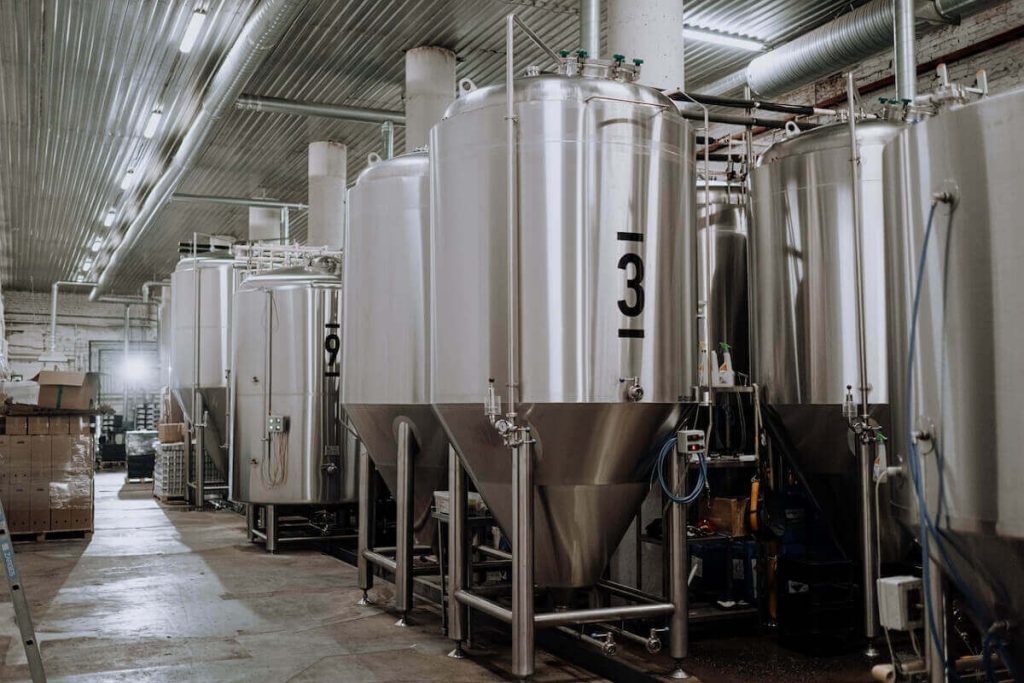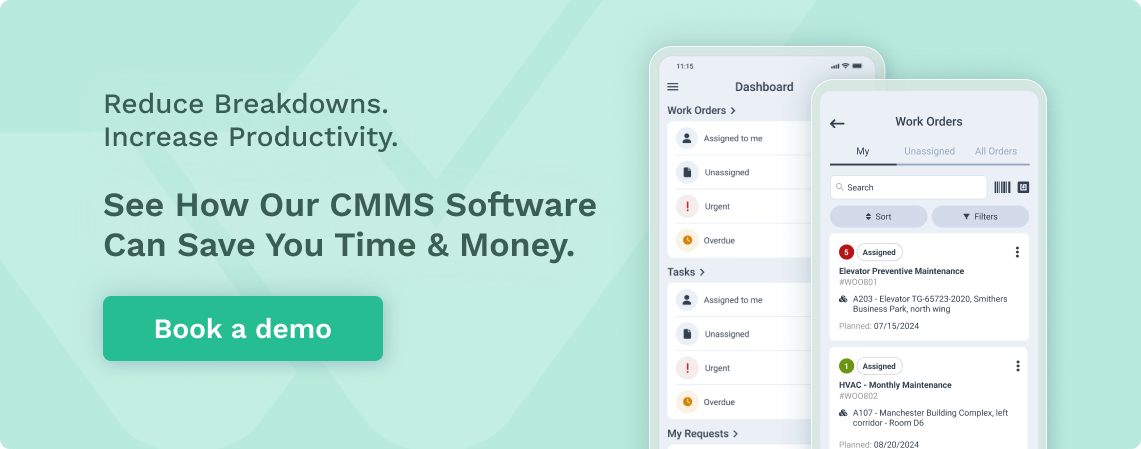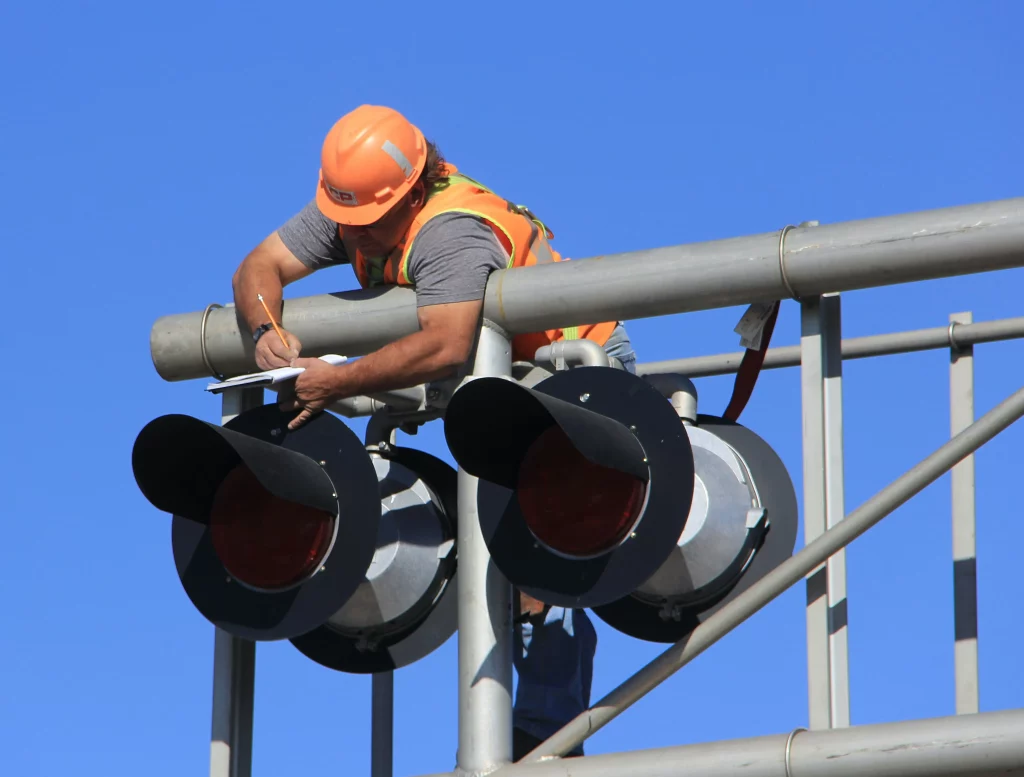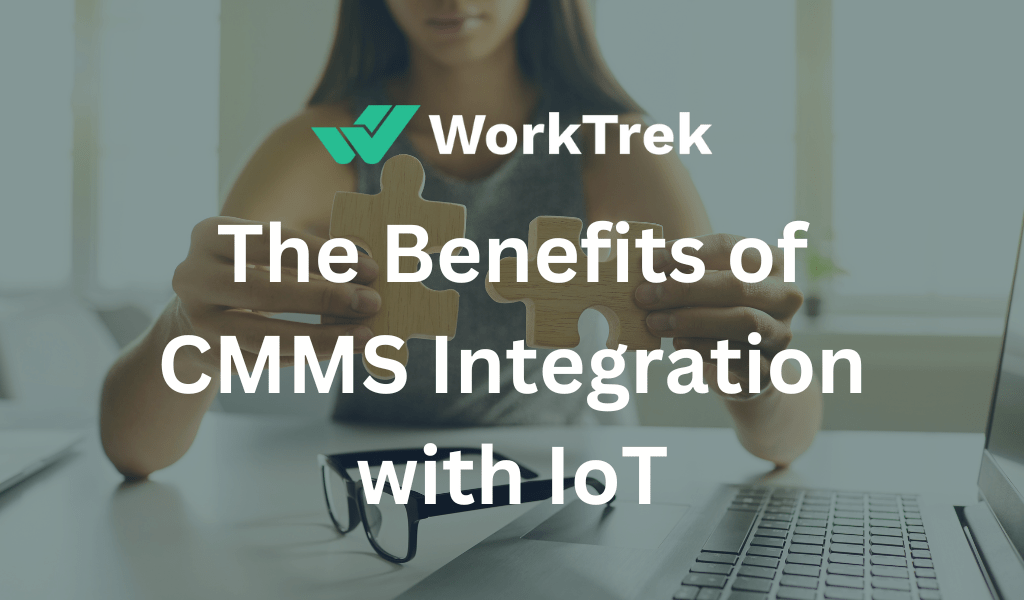Get a Free WorkTrek Demo
Let's show you how WorkTrek can help you optimize your maintenance operation.
Try for freeThe combination of IoT and CMMS defines part of the concept of smart maintenance which bases its principles on the integration and analysis of data transmitted by connected objects (devices, systems, machinery, buildings).
In this article, we delve into scenarios and experiences in the field of smart maintenance. In particular, we will address the topic of analyses that CMMS allows to be developed thanks to the connection with the data transmitted by objects (IoT). All with a view to the development and implementation of maintenance plans with IoT (predictive maintenance) which plays, and will play even more in the future, a strategic role in the industry.
Read also 20 benefits of CMMS
What is Smart Maintenance?
Smart Maintenance represents the evolution of traditional maintenance processes.
The fundamental concepts on which to outline the discussion around smart maintenance follow two lines:
- Capture and use data to make informed decisions
- The interconnected use of different technologies

As regards the first point it is very simple: although many companies are still stuck in an almost tribal management of maintenance, based on word of mouth and popular beliefs, today the importance of data is clear to everyone. Now, there are many ways to acquire data and use it, and, spoiler, they’re not all exactly smart. Filling out Excel sheets by hand, and reporting the information from a paper report at the end of the day is a noble and virtuous effort, but it is not even the best.
It should be equally clear to everyone the advantage deriving from the use of maintenance software capable of collecting data and information on the performance of our team and our assets automatically, generating custom reports that give us a complete picture of the current situation every moment.
See CMMS Features you can’t live without.
Internet of Things (IoT) and Industrial Internet of Things (IIoT)
The Industrial Internet of Things (IIoT) allows the development of new competitive business models in the industrial sector. Cutting costs, improving customer service, and implementing maintenance with IoT (predictive maintenance) are just some of the objectives that can be achieved.
For these reasons, companies’ interest in this system based on the adoption of new technologies, new ideas and new ways of operating grows every day.

Predictive maintenance
Maintenance with IoT allows you to keep company assets up and running, significantly reducing costs and saving companies millions of euros.
To create effective maintenance plans with IoT, IoT, and CMMS use sensors and connected devices in every production sector. In this way, KPIs (key performance indicators) and machinery can be easily monitored.
Artificial intelligence
Due to the ability to quickly extrapolate data, Artificial Intelligence is gaining more and more importance within the IoT. From the combination of AI and IoT it is possible to achieve important objectives.
Among the numerous advantages, we mention some:
- increase in production efficiency,
- machine learning which not only allows the automatic recognition of patterns but also the detection of anomalies starting from the data transmitted by sensors and intelligent devices,
- elimination of unplanned downtime,
- improvement of risk management,
- more accurate forecasts than classic monitoring systems,
- precise data that does not require further verification.
Augmented Reality
Through augmented reality, maintenance workers with IoT can view machine diagrams and instructions in a much more accurate and innovative way than in the past.
The use of wearable devices (smart glasses) leaves the hands of the maintenance operator free with IoT who can also carry out his intervention by sharing the 360° view of the equipment on which he works. If necessary, it can also interact step-by-step with other workers and control the device via voice recognition.
An IoT and CMMS system equipped with augmented reality technologies proves efficient in terms of greater safety and productivity in predictive maintenance contexts.
Next, read Preventive Maintenance vs Reactive Maintenance.
Smart Maintenance: IoT and CMMS
In the operational plans developed on IoT and CMMS, the way of understanding each phase of the processes changes from start to finish, involving every sector of the production chain. From plant sensors that alert maintenance technicians with IoT in case of problems, to those on the structures that facilitate the intelligent management of resources (electricity, water, steam, etc.), from sensors to track warehouse stocks to those to improve quality controls. Also of note is the ability of smart devices to operate within safety and environmental regulations.

For example, smart maintenance makes it possible to monitor the status of motors, gearboxes, joints, and photocells in real time, safety protections, gas detectors, heat sources, etc… Furthermore, the sensors installed on buildings monitor each element 24 hours a day, releasing alerts in case of deviations from standard values.
See CMMS benefits for small businesses.

Starting an IoT and CMMS integration plan requires the availability of three resources:
Hardware
It is the set of electronic devices that allow the components of a machinery/system to detect, transmit, receive, and archive data.
Software
It is the computer program (or a set of programs) that constitutes the backbone on which the IoT and CMMS system operates, allowing both the operation of the hardware devices and the processing of the data received.
Communication infrastructure
In the new IoT and CMMS scenarios, the network infrastructure represents the link which, through the use of protocols and technologies, makes the exchange of information between all operators possible.

Supercharge your maintenance game with WorkTrek CMMS!
Book a WorkTrek demo to see how a CMMS can help your business.
Try for freeIoT and CMMS: the Winning Combination
The CMMS
After having discussed IoT extensively, let’s now focus on CMMS and how the two technologies can interact in an IoT and CMMS system.
Management and integration of industrial processes in real-time are activities that are increasingly at the center of attention in Industry 4.0. To respond to new industrial needs, adaptation is also essential in the CMMS context.
IoT and CMMS integration
Usually, IoT and CMMS integration occurs through the use of an additional module to the CMMS. To develop these modules, third-party software solutions specialized in the sector are often used.
The information transmitted by the sensors installed on machines, systems, devices, and buildings is received by the IoT module and transformed into data that can be interpreted by the CMMS. This is why it is important that the IoT and CMMS service providers also take care of the selection of sensors.
Consider reading, How to implement CMMS.
World Wide Web architecture
The CMMS must be developed with a WEB architecture. Users can access it at any time and from any location, even outside the workplace, via a normal Internet browser. It must not require the purchase of additional equipment and must keep the demand for network traffic to a minimum. Furthermore, it is essential that it supports the latest web technologies (Ajax, HTML5, JSF) and offers various configuration options, for example on a classic Internet network or on a local network (Intranet).
Sharing and integration into your information system
The new global information systems require continuous and rapid exchanges of information between different corporate entities. In smart maintenance, the maintenance workers’ interventions must be based on collaboration and interaction with the production department staff. To facilitate all this, IoT and CMMS must provide suitable tools to function on the information system used by the parties involved.

Design and ergonomics
Richness of functionality and computing power are fundamental characteristics but not sufficient to establish the quality of a good IoT and CMMS system. Attention to ergonomics, i.e. the adoption of the best solutions capable of satisfying the psychophysical needs of the workers and of the company at the same time, must also characterize the software that will be adopted for the IoT and CMMS project.
Specifically, the ideal CMMS must ensure simple data management. A classic Excel-type interface is the most widely adopted solution as it allows a large volume of information to be inserted, modified, updated, imported, and exported directly to a spreadsheet.
It is also necessary to ensure that the forms can be customized so that each user profile can modify the fields and functions. Among other things, it must allow you to:
- add new field labels,
- define links with external applications,
- customize the graphic indicators,
- change the format of the masks,
- set contextual navigation,
- customize menu options.
Versatility
The ability to adapt to different situations is a feature that not all IoT and CMMS systems offer. This peculiarity is fundamental when you intend to use the same system to manage different companies by showing users only the information relating to your organization.
If the companies to be managed are located in different countries, it will be essential for the IoT and CMMS combination to also be able to operate in multilingual modes. With it you can choose specific configurations by language by adapting the texts of the pages to the country or profile of the connected user.
Read also, The Best CMMS software.

Report management
The availability of precise and timely reports allows you to analyze the conditions of the systems and the effectiveness of smart maintenance. In this process, it is essential to have an IoT and CMMS system which, in addition to providing predefined reports, also allows them to be customized based on the specific needs of the user.

Security and traceability
Compliance with safety and environmental regulations represents one of the most delicate activities for every company. In these sectors, the IoT and CMMS combination must be able to provide tools aimed at improving internal services by satisfying the specifications for quality assurance and traceability of interventions.
Customization
Each company is different from the others because the identity, the organizational system, the commercial service, the information systems, and so on are different.
An IoT and CMMS structure is like a dress: for it to be comfortable, the tailor must cut and sew it to perfection on the person who will wear it. Be wary of “universal CMMS” software providers because these programs can never fully respond to a company’s specific needs.
Flexibility of the offer
Different solutions are normally proposed to implement a CMMS. The most common are:
- Purchase of the license: By choosing this option, the service provider will limit itself to installing the CMMS on a server provided and managed by the client company.
- Software As A Service: With this option, the CMMS is rented. The software supplier will be responsible for installing and managing it on a secure server it owns.
- Hosting: This is an intermediate solution between the two previous proposals. The company purchases the license but leaves the installation and management on a server it owns to the supplier.

The Benefits of CMMS Integration with IoT
Integrating IoT (Internet of Things) into CMMS (Computerized Maintenance Management System) software brings numerous advantages:
Predictive maintenance and cost savings
One of the most important economic benefits of IoT and CMMS integration is predictive maintenance. By continuously monitoring equipment health using IoT sensors and analyzing data through a CMMS, facility managers can predict potential failures and proactively plan maintenance. This proactive approach prevents costly unplanned downtime and reduces the need for emergency repairs, resulting in significant cost savings.
Optimize energy use to increase cost efficiency
Technology enables precise monitoring of energy consumption in systems. By integrating this data into a CMMS, facility managers can identify energy inefficiencies and implement targeted strategies to optimize energy consumption. Reducing energy consumption can save costs with CMMS and have a positive impact on the bottom line.
Minimize downtime and increase productivity
CMMS solutions enable efficient maintenance procedures and optimized operations, ultimately minimizing downtime. The ability to identify maintenance needs in advance coupled with fast response times ensures that equipment downtime is minimized, resulting in continuous production and higher productivity.

Improve resource allocation to optimize costs
By leveraging IoT-generated data and CMMS analytics, facility managers can gain valuable insights into resource utilization. This data-driven approach enables them to make informed resource allocation decisions, avoid unnecessary expenses, and optimize cost efficiency.
Improved device monitoring
IoT devices collect real-time data on device performance and usage. This information provides maintenance teams with valuable insights, allowing them to make informed decisions about maintenance activities.
Real-time device status updates
Devices provide real-time device status updates, allowing maintenance teams to quickly respond to equipment failures or issues. This timely information ensures quick action and reduced downtime.
Improved asset management
IoT and AI integration make it easier to effectively track and manage assets within a CMMS. This feature helps reduce the risk of device loss or theft and improves overall asset control and accountability.
Conclusion
In addition to facilitating the integration of IoT into a facility, the flexibility of CMMS software easily supports its potential by quickly acquiring and analyzing big data. The implementation of IoT and CMMS generates a powerful technological support system not only for maintenance teams but for all company services.
Book a WorkTrek CMMS demo here and get a 30-day free trial.









